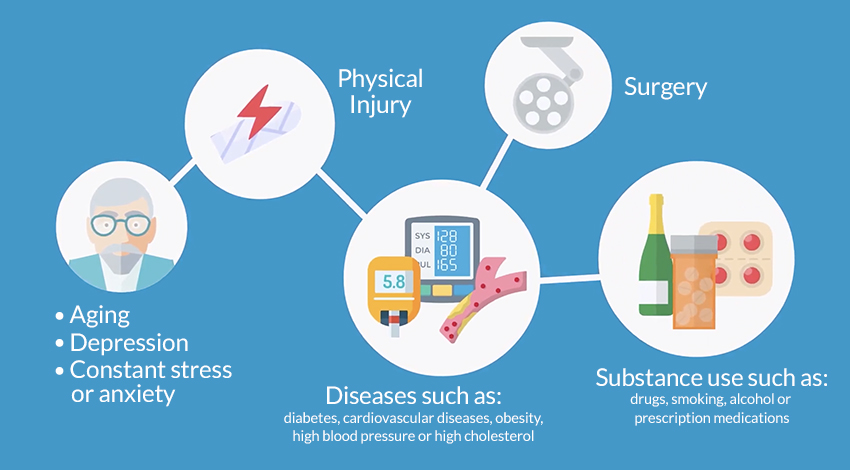
ed dysfunction medications
FollowOverview
-
Founded Date 18 December 1984
-
Sectors Creative and Design
-
Posted Jobs 0
-
Viewed 12
Company Description
The Influence of Local Weather Change On International Agriculture

Local weather change is some of the pressing challenges facing humanity at this time, with far-reaching penalties throughout various sectors, notably agriculture. As the worldwide inhabitants continues to develop, the demand for meals is increasing, whereas local weather change is altering the situations beneath which meals is produced. This report explores the impact of local weather change on international agriculture, examining the challenges, adaptations, and potential solutions.
1. Introduction
Agriculture is highly delicate to local weather variations. Modifications in temperature, precipitation patterns, and the frequency of extreme weather occasions can considerably have an effect on crop yields and livestock productiveness. As we observe shifts in local weather patterns, it’s crucial to grasp how these adjustments will affect agricultural practices and meals security worldwide.

2. Results of Local weather Change on Agriculture
2.1 Temperature Will increase
Rising global temperatures can result in a wide range of agricultural challenges. As an illustration, many crops have optimum temperature ranges for development, and deviations from these ranges can result in diminished yields. Heat stress can have an effect on plant physiology, leading to decreased photosynthesis and elevated respiration rates. Crops like wheat and maize are significantly susceptible to temperature will increase, with research predicting yield declines of as much as 25% in some regions by 2050.
2.2 Changes in Precipitation Patterns
Climate change is altering precipitation patterns, resulting in both excessive rainfall or extended droughts in different regions. Areas that traditionally relied on predictable rainfall could face water scarcity, whereas others could expertise flooding that hampers agricultural activities. For example, the elevated frequency of droughts in sub-Saharan Africa poses a big risk to meals safety, as many communities depend upon rain-fed agriculture.
2.3 Extreme Weather Occasions
The frequency and depth of extreme weather events, resembling hurricanes, floods, and heatwaves, are increasing due to climate change. These occasions can devastate crops and livestock, resulting in quick food shortages and long-term economic impacts. The destruction of infrastructure, corresponding to roads and storage services, further complicates restoration efforts and disrupts supply chains.
3. Socioeconomic Impacts
The results of climate change on agriculture prolong past crop yields and livestock health; they even have important socioeconomic implications. Farmers, significantly in growing international locations, might wrestle to adapt to changing circumstances, resulting in elevated poverty and meals insecurity. If you liked this article and you simply would like to get more info relating to erectiledysfunctiontreatments.online please visit our web site. Smallholder farmers, who often lack the sources to implement adaptive measures, are particularly weak.
4. Adaptation Strategies
To mitigate the impacts of local weather change on agriculture, various adaptation strategies are being explored and applied globally. These methods embrace:
4.1 Crop Diversification
Diversifying crop production can enhance resilience towards climate variability. By planting a variety of crops, farmers can cut back the danger of whole crop failure because of antagonistic weather circumstances. This strategy not solely helps safe meals supplies but in addition improves soil health and biodiversity.
4.2 Improved Agricultural Practices
Adopting sustainable agricultural practices, such as conservation tillage, agroforestry, and integrated pest management, can improve the resilience of farming methods. These practices can improve soil health, conserve water, and scale back greenhouse gas emissions.
4.Three Local weather-Resilient Crop Varieties
Creating and selling climate-resilient crop varieties that can withstand heat, drought, and pests is essential. Advances in biotechnology and conventional breeding strategies may help create crops which are more adaptable to changing climatic situations.
4.4 Water Administration
Effective water management methods, resembling rainwater harvesting and environment friendly irrigation techniques, will help farmers adapt to changing precipitation patterns. Implementing these strategies can enhance water availability for agriculture, even in instances of drought.
5. Coverage and Governance
Authorities policies play a critical position in addressing the challenges posed by climate change to agriculture. Policymakers must prioritize investments in analysis and development, infrastructure, and training to assist farmers in adapting to altering conditions. International cooperation can be important, as local weather change is a worldwide challenge that transcends national borders.
6. Conclusion
The impact of climate change on world agriculture is profound and multifaceted, posing significant challenges to meals safety and livelihoods worldwide. Understanding these impacts and implementing effective adaptation strategies are crucial for guaranteeing a sustainable agricultural future. As we transfer forward, it’s imperative that governments, organizations, and communities work collectively to construct resilient agricultural techniques capable of withstanding the results of climate change. By investing in analysis, promoting sustainable practices, and supporting weak farmers, we may help secure food manufacturing for future generations in an more and more unsure climate.


